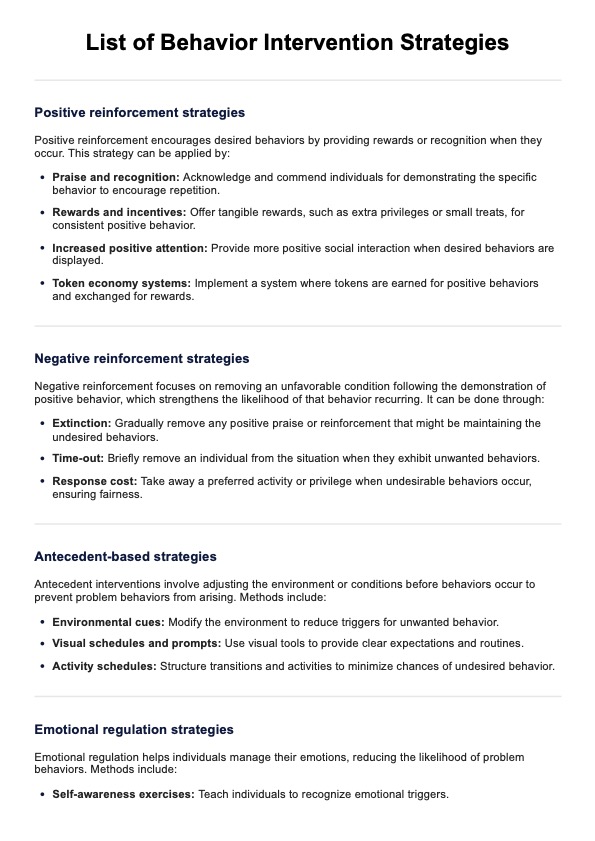Positive behavior interventions focus on reinforcing desirable behaviors through positive praise, rewards, or recognition while reducing the frequency of negative consequences or problem behaviors. They aim to create a structured environment where individuals can thrive.

List of Behavior Intervention Strategies PDF
Explore a comprehensive guide to help you encourage positive change with our List of Behavior Intervention Strategies. Access our free resource here!
List of Behavior Intervention Strategies PDF Template
Commonly asked questions
Ongoing support ensures that interventions remain effective over time. Regular monitoring and adjustments help adapt strategies to meet changing needs and provide continuous reinforcement of positive behavior.
Some common strategies include positive reinforcement (rewarding appropriate behaviors), antecedent interventions (modifying environments to reduce unwanted behaviors), extinction techniques (removing rewards for unwanted behaviors), and self-management strategies (teaching skills for managing behaviors).
EHR and practice management software
Get started for free
*No credit card required
Free
$0/usd
Unlimited clients
Telehealth
1GB of storage
Client portal text
Automated billing and online payments











